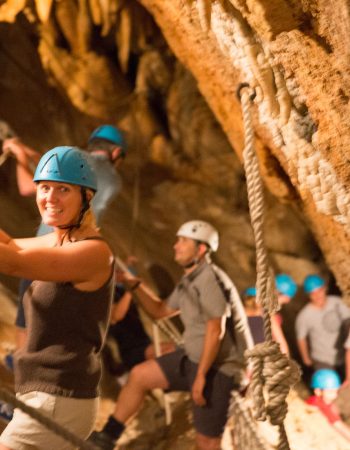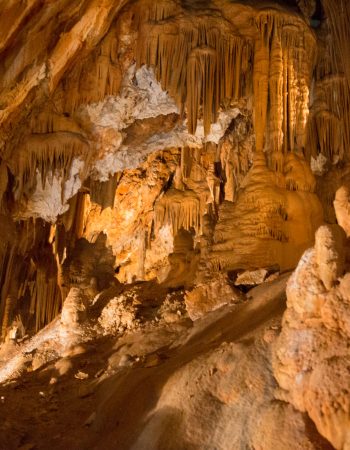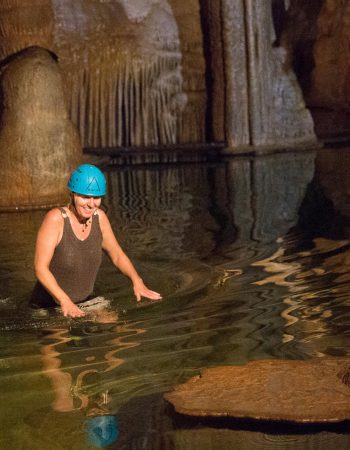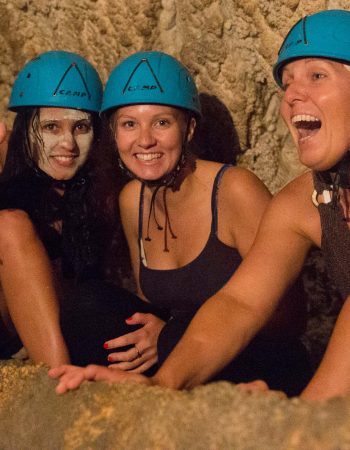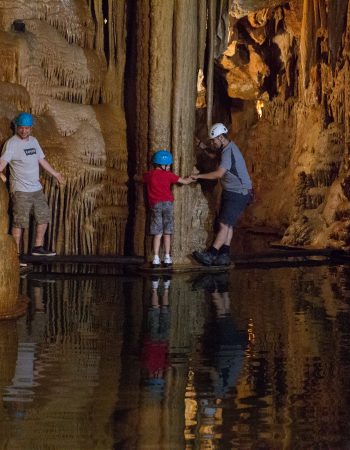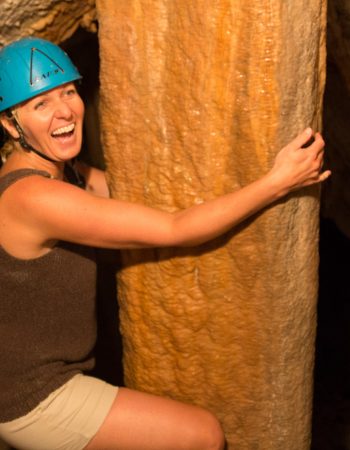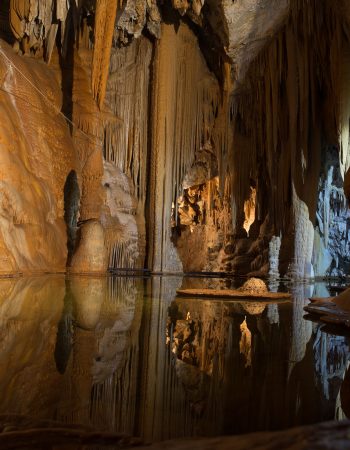St Michael Lower Caves Gibraltar
Today, organised tours are available to the general public. The tour normally lasts around three hours, however, due to the fact that there are some scrambling and minor climbing with ropes involved, duration times may vary. The cave is totally in its original natural state (although it is fully lit). This cave could be referred to as a show cave as most known formations may be found here. One of the sites visited during this tour is a beautiful underground lake and fortunately for the visitor, who will no doubt not want to forget this wonderful speleological experience, photography is permitted.
People are advised to wear stout shoes and casual clothing. Group sizes range from a maximum of ten and a minimum of five. Due to the unusual nature of this tour, children under the age of ten years are not allowed. Three days prior notice is also necessary for bookings. For details and costs contact the numbers below.
Lower St Michael’s Cave was discovered accidentally by the sappers whilst driving a tunnel into the lower reaches to provide a secondary exit. A cavern was discovered, with several chambers, which may have been sealed for 20,000 years. The cavern is of extraordinary beauty, glimmering with white, grey and red stalactite columns, resembling a cathedral with pulpit, chancel and organ pipes. This extraordinary beautiful cavern is remarkable for three reasons: the size of the main chambers, the profusion and variety of calcite formations, and last but not least – a lake of crystal clear water, nearly forty yards long estimated to hold 45,000 gallons.
During your visit to the cave, which since discovery, has been under the control of the Ministry of Defence, in particular, the Royal Engineers, you will be able to see almost all known cave formations including stalagmites, stalactites, columns, flowstone, rimstone, curtains, helictites, straws, coral rocks, Mons Milch, and most unusual pallet formation, all of which contributes to the series being unique in Europe. You will see amongst others: The Great Rift, the Dove Chamber, Wonderland, The Bottomless pit, Southern Hall, the lake, St Michael’s Cross, The Garden Gnome, Apache Land, The Baby’s Hand, Mickey Mouse, ET and Gibraltar’s own Rock Ape. Gibraltar is riddled with caves. There are over 140 caves. Some are littoral or sea caves, others are inland caves, made of fissures. Some sea caves are high up the Rock, testifying to the different sea levels and geological movements of the past. The caves have been explored for a number of years, and numerous fossil remains found, including the skull of a Neanderthal woman. This was discovered in 1848 in Forbes Quarry, at the foot of the north face of the Rock, before the famous discovery at the Neander Valley. Its discovery was not publicised and the skull lay forgotten in a cupboard in the Garrison Library for many years. Had its importance been recognised at the time, we might well talk today about Gibraltar Woman instead of Neanderthal Man.


